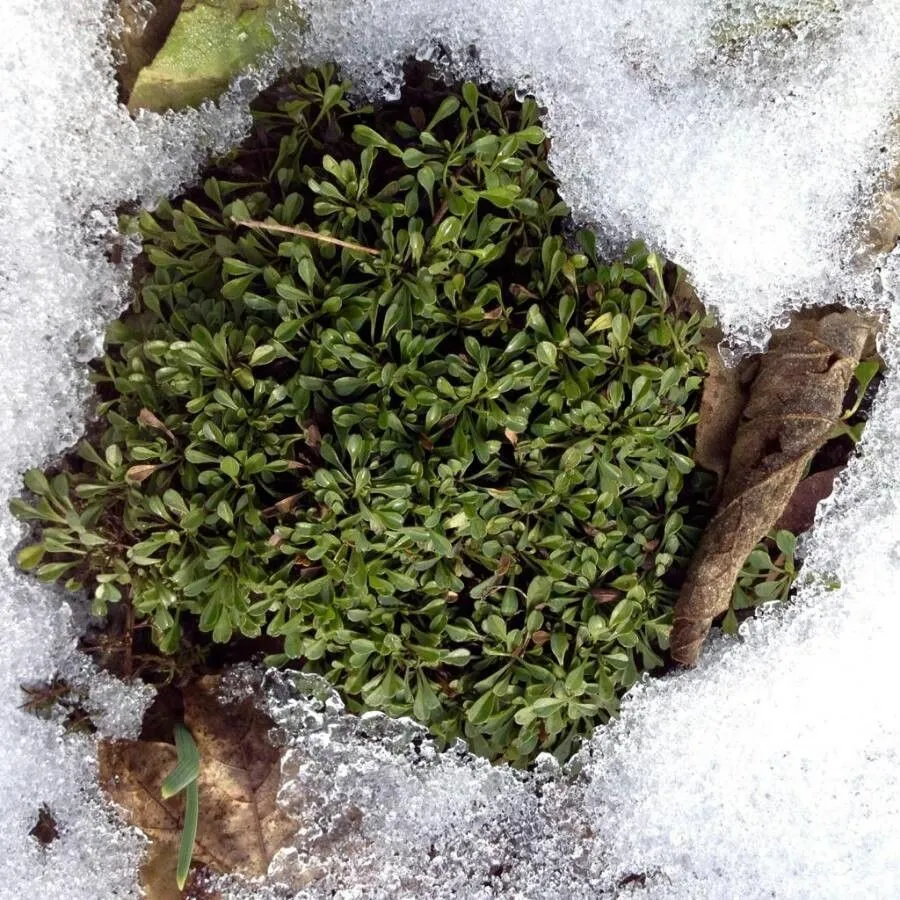
Author: L.
Bibliography: Sp. pl. 1:96. 1753
Year: 1753
Status: accepted
Rank: species
Genus: Globularia
Vegetable: False
Observations: C. & S. Europe to N. Türkiye
The Heart-leaved Globe Daisy, known scientifically as Globularia cordifolia, is a fascinating and resilient plant. First described in 1753 by the eminent botanist Carl Linnaeus, it remains a notable member of the Plantaginaceae family. The plant is distinguished by its small, globe-shaped flowers and heart-shaped leaves, which contribute both to its common name and its charming aesthetic.
Native to Central and Southern Europe, its range extends to Northern Türkiye. This geographical spread indicates the plant’s adaptability to various terrain and climate conditions within these regions. The Heart-leaved Globe Daisy thrives in rocky and mountainous areas, often found in alpine meadows or on limestone outcrops, demonstrating a preference for well-drained soils and sunny locations.
The daisy blooms typically in late spring to early summer, showcasing clusters of pale blue to lavender flowers. These blooms are not just visually appealing but also play a role in supporting local biodiversity by attracting a variety of pollinators, such as bees and butterflies. The flower heads are compact and spherical, making them resemble tiny globes, which further emphasizes the “globe daisy” part of its name.
Globularia cordifolia is also appreciated in ornamental gardening for its low-growing, mat-forming habit, which makes it an excellent groundcover. Its evergreen leaves provide year-round interest, maintaining their lush green hue even through winter months. This hardy perennial requires minimal maintenance once established, needing only occasional watering during prolonged dry spells.
In botanical and horticultural circles, the plant is celebrated not only for its aesthetic and ecological contributions but also for its resilience and low maintenance needs, making it a valuable addition to both natural landscapes and cultivated gardens. Indeed, the Heart-leaved Globe Daisy exemplifies the beauty and hardiness characteristic of alpine flora, continuing to charm botanists and gardeners alike centuries after its initial documentation.
Deu: herzblättrige kugelblume
Swe: klippskrabba
En: Heart-leaved globe daisy, Heart-leaved Globularia, Herzblttrige Kugelblume, Heart-leaf Globe Daisy, Leather Leaf Powder Puff, Leather-leaf Powder Puff, Matted Globularia
Ar: عينون صخري
Bg: Сърцевиднолистно гологлавче
Ca: Lluqueta vera
Zh: 心叶球花
Nl: Hartblad Kogelbloem, Hartbladige Kogelbloem
Fr: Globulaire à feuilles en cœur, Globulaire à feuilles cordées, Globulaire à feuilles en coeur, Veuve-céleste
De: Herzblättrige Kugelblume
Hu: Szívlevelű gubóvirág
It: Vedovelle celesti, Vedovella celeste
Sk: Guľôčka srdcovitolistá
Es: Srčastolistna mračica
Sv: Klippskrabba
Zh-tw: 心葉球花
© copyright of the Board of Trustees of the Royal Botanic Gardens, Kew.
© copyright of the Board of Trustees of the Royal Botanic Gardens, Kew.
© copyright of the Board of Trustees of the Royal Botanic Gardens, Kew.
Taken May 28, 2022 by manuseitz (cc-by-sa)
Taken Jun 2, 2021 by Jacques Zuber (cc-by-sa)
Taken Sep 10, 2021 by Pietro Brignoli (cc-by-sa)
Taken Apr 14, 2019 by Carlos Villasante (cc-by-sa)
Taken Dec 23, 2018 by Dieter Wagner (cc-by-sa)
Taken Jun 21, 2018 by Daniele Boggiani (cc-by-sa)
Taken Apr 25, 2019 by Pep Secem (cc-by-sa)
Taken Apr 25, 2019 by Pep Secem (cc-by-sa)
Taken Apr 25, 2019 by Pep Secem (cc-by-sa)
Taken Jun 20, 2019 by Fejul Xeto (cc-by-sa)
Taken Jan 10, 2020 by Diego Alex (cc-by-sa)
Taken Jun 2, 2021 by Jacques Zuber (cc-by-sa)
Taken Jun 4, 2022 by Jean-Marie Frenoux (cc-by-sa)
Taken May 23, 2018 by jose (cc-by-sa)
Taken Dec 23, 2018 by Dieter Wagner (cc-by-sa)
Taken Jun 2, 2022 by Llandrich anna (cc-by-sa)
Taken Oct 15, 2020 by The Raven Girl (cc-by-sa)
Taken Oct 24, 2017 by Yoan MARTIN (cc-by-sa)
Taken Aug 17, 2022 by Ernst Fürst (cc-by-sa)
Taken Apr 27, 2012 by Tela Botanica − Yoan MARTIN (cc-by-sa)
Taken May 11, 2019 by Vuk Bojović (cc-by-sa)
Taken Jul 15, 2013 by Photoflora – Benoit BOCK (©)
Taken May 15, 2009 by Photoflora – Benoit BOCK (©)
Taken May 15, 2009 by Photoflora – Benoit BOCK (©)
Taken Jan 1, 1970 by Photoflora – L’Abbé COSTE (©)
Taken Jun 18, 2019 by MICHEL DUSSERE (cc-by-sa)
Taken Jun 1, 2020 by Ramona Sgariglia (cc-by-sa)
Ph maximum: 9.0
Ph minimum: 8.0
Light: 9
Atmospheric humidity: 6
Bloom months: [‘may’, ‘jun’, ‘jul’]
Soil nutriments: 2
Family: Myrtaceae Author: (F.Muell.) K.D.Hill & L.A.S.Johnson Bibliography: Telopea 6: 402 (1995) Year: 1995 Status:…
Family: Rubiaceae Author: Pierre ex A.Froehner Bibliography: Notizbl. Bot. Gart. Berlin-Dahlem 1: 237 (1897) Year:…
Family: Sapindaceae Author: Koidz. Bibliography: J. Coll. Sci. Imp. Univ. Tokyo 32(1): 38 (1911) Year:…
Family: Asteraceae Author: A.Gray Bibliography: Pacif. Railr. Rep.: 107 (1857) Year: 1857 Status: accepted Rank:…
Family: Fabaceae Author: Medik. Bibliography: Vorles. Churpfälz. Phys.-Ökon. Ges. 2: 398 (1787) Year: 1787 Status:…
Family: Aspleniaceae Author: (Cav.) Alston Bibliography: Bull. Misc. Inform. Kew 1932: 309 (1932) Year: 1932…